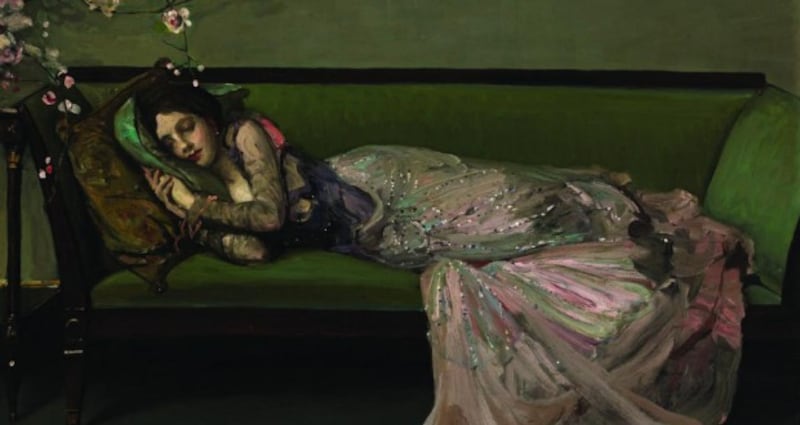‘I don’t approve of what Wall Street and the wealthy have done to this country, but they are the very ones buying my paintings.”
The quote, from American painter Scott Kahn, probably echoes the sentiments of many Irish artists. But, without the rich, from Renaissance Italy's merchant princes to 21st century New York hedge-fund managers, there wouldn't be an art market.
Is art a good investment? The answer is: “It can be, sometimes”, but the primary motivation for buying should be for your own pleasure, not for profit.

Over a year before the Cyprus banking crisis – when large depositors were forced to take a "haircut" – a Dublin art-auction goer confided that he was buying paintings to protect his wealth. "When the government comes for some of my savings", he reasoned, "they can't take part of a painting." There is anecdotal evidence that he is not alone in his novel approach to risk management.
However, while fine art and antiques, and ancillary “collectibles” such as classic cars, rare stamps, wine and jewellery, may sometimes prove to be a good long-term investment, as an asset class, such investments do not provide any income and don’t generally feature in traditional, managed wealth investment portfolios.
Pat MacCormack who heads Barclays Wealth Management division in Ireland said art and antiques often form part of high net worth individuals' personal holdings but are regarded as "expressions of lifestyle" rather than active investments. "They may grow in value over time" he said "but don't offer any yield" in terms of income unlike stocks and shares, bonds or property rental.
There has been very little research in this field but a survey was conducted by Barclays last year of 2,000 wealthy clients worldwide, including 50 in Ireland, to determine their attitude to investing in “treasure”. Treasure was defined as assets such as precious jewellery, fine art, wine, antique furniture, classic cars and precious metals.
The results show that such items account for about 10 per cent of the wealth of the Irish respondents (in line with the global average) and that “for many collectors, the cost and financial risk of treasure are irrelevant given the intellectual stimulation and aesthetic pleasure it brings to them”.
The report also found that almost two-thirds of the Irish respondents consider at least one of their treasure assets to be “priceless” and “would not part with it at any price”.
Fine art and antiques auctioneers and dealers are generally, and understandably, reluctant to comment on the potential investment value of what they are selling. After all, prices can, and do, rise as well as fall and are subject to changing tastes and fashion over time.
Also, unlike the stock, bond and commodities markets, there are no daily indexes to track prices. A painting or antique is ultimately only worth what an individual is prepared to pay for it on a particular day. A Francis Bacon painting might sell for £20 million in London on a Monday evening but another painting by the same artist may fail to sell at all in another auction in New York the following day.
The collectors who bought Paul Henry or Jack B Yeats paintings in mid-20th century Dublin for a few hundred pounds could not have dreamt that one day their purchases might be tens thousands of euro and presumably bought them because they liked the pictures.
The best advice is to buy art and antiques that you like and choose items of the best quality you can afford – for the pleasure. If they appreciate over time that will be an added bonus but any financial windfall is more likely to be enjoyed by your heirs and successors.
Remember that most art and antiques are never going to become hugely valuable and the search for the next Yeats or Henry is as elusive as seeking out the penny stock that is destined to become the next Apple or Google.
While many well-off people own fine art, antiques and collectibles that’s not why they are rich.
That said, anyone determined to create a portfolio of "blue-chip" Irish items in this category might want to consider assembling some of these items: a painting by artists including Paul Henry, Jack B Yeats, Sir John Lavery or Sir William Orpen; signed first edition copies of books by Oscar Wilde, James Joyce, Samuel Beckett or Seamus Heaney; antiques such as Irish Georgian silver; and rare items relating to the foundation of the State or any item s associated with Michael Collins.











